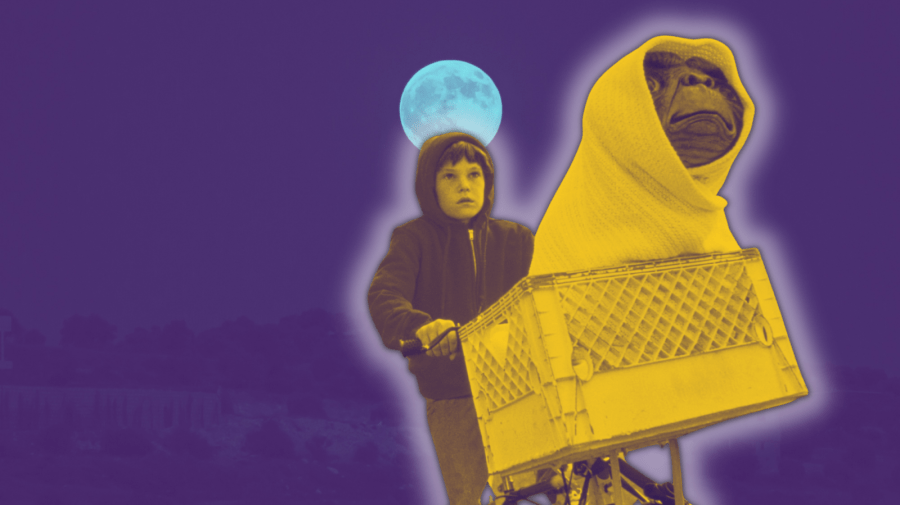
It’s one of the immutable facts of popular culture that not everything popular is great and not everything great is popular. We love all kinds of cultural artifacts for all kinds of reasons. My favorite songs, for example, aren’t necessarily the most musically perfect compositions; they’re the songs that make me feel something important about being alive. My favorite books aren’t always made up of the most wondrous sentences; they might just tell me the story I need to hear. It goes without saying that it’s much the same with movies.
At the same time, it’s also true that — once in a great while — a piece of culture comes along that’s wildly popular while also being technically masterful, aesthetically gorgeous, thematically profound, and a million superlatives. Once in a while, something comes along that hits all the right notes, and centers itself right at the peak of the popular-great matrix. Steven Spielberg’s E.T. The Extra Terrestrial, which came out 40 years ago this June, is one of these.
Of course, great movies are collaborations between lots of different people working at the peak of their artistic powers. In order to celebrate the majesty of E.T., let’s take a look at a few of the elements and themes of the film that made it such a huge success in the moment, and make it a timeless classic to this day.
Incredible Child Actors
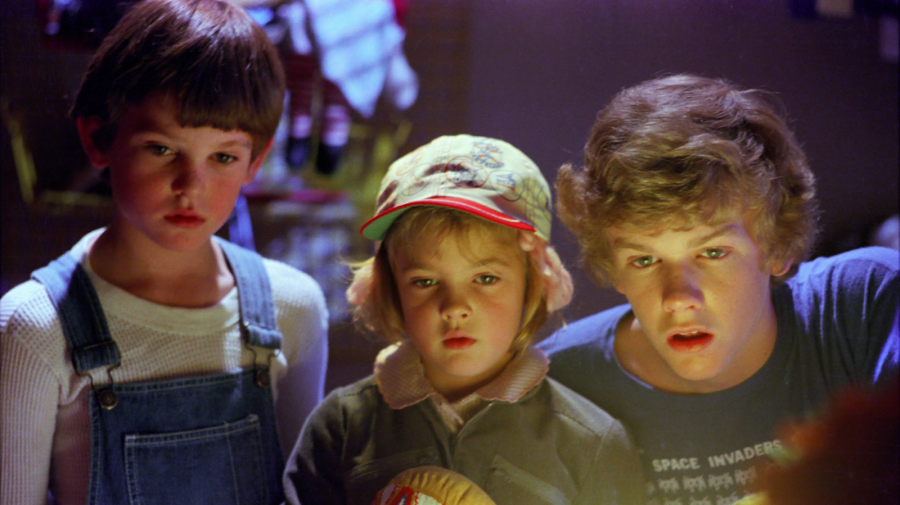
It’s sort of an obvious point to make, but for a movie that’s ostensibly for kids to also work for adults, the performances of the kids need to be pretty amazing. In E.T., Spielberg got two of the best kid actor performances of all time out of Henry Thomas, who played Elliott, and Drew Barrymore, who played Gertie.
Thomas’ performance, in particular, is at the center of the movie. His relationship with E.T. needs to be utterly believable for the movie to have any chance of working. Thomas’ audition was legendary — do yourself a favor and take a look. After getting some context, he immediately understood the requisite emotional tenor of the moment. Even in the context of an audition, the depth of Thomas’ fear and sadness at the prospect of losing his friend comes through. Hilariously, you can even hear Spielberg at the end of the audition saying, “Okay kid, you got the job.”
Barrymore’s performance is just as impressive. Drew was the granddaughter of famous Hamlet actor John Barrymore and the grandniece of Lionel Barrymore, who was most famous for playing the villain, Mr. Potter, in Frank Capra’s It’s a Wonderful Life (1946). With this kind of lineage, perhaps it shouldn’t have been such a surprise what a great actor Drew was right away.
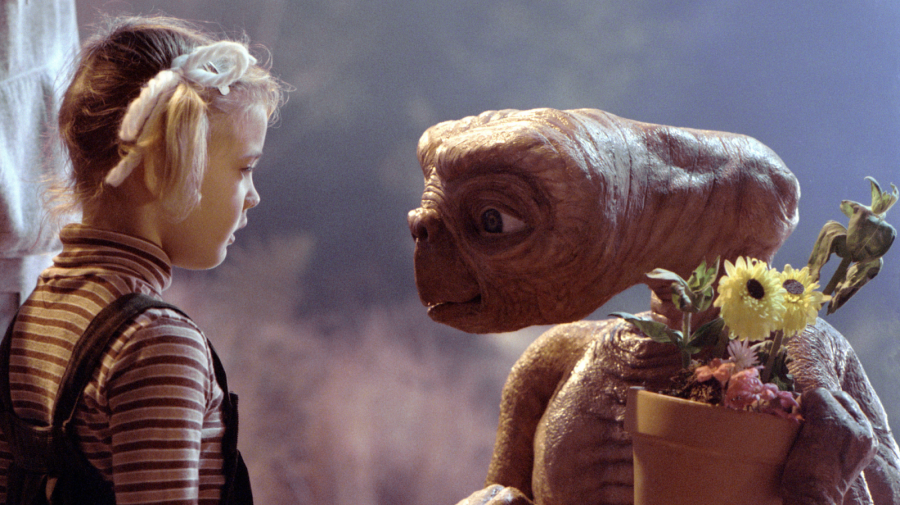
On the other hand, Spielberg said recently that when he first met the young Drew during the casting for the movie, she told him, “I’m not an actor. I have a punk rock band.” Initially Spielberg believed her, but then pretty soon realized she was just making it up. That’s when it hit him that if this kid was capable of imagining — and convincing him — that she was in a punk rock band, she could probably pull off imagining that she was interacting with a real extraterrestrial. He cast her right away.
E.T. was Barrymore’s second film after appearing briefly as the daughter of William Hurt’s character in the 1980 sci-fi horror film Altered States. At just seven years old in E.T., she is everything you could want in an actor — child or otherwise. She’s totally engaged in the material, adorable, and able to act really convincing opposite a weird-looking puppet of an alien. She’d go on to yet another all-time great kid actor performance in Firestarter two years later in 1984 and countless other amazing roles over the course of what is now a long and illustrious Hollywood career. Today, she’s even hosting an increasingly popular talk show, The Drew Barrymore Show.
Iconic Images and Music
Maybe the most famous thing about E.T. is the most iconic image that came out of it. Elliott’s nighttime bicycle ride through the sky with E.T. in a basket on the handlebars was such a famous image that it became the logo for Amblin Entertainment, Spielberg’s production company.
However, the movie itself is full of timeless images that set certain feelings in stone for everyone who watches it. One of my favorites is the shot of Elliott heading out to the back yard near the beginning of the movie to investigate a noise in the shed. Part of what I love so much is that it’s so much more emotional than it is logical. Why is there a cornfield in a backyard in a part of California where we just saw a bunch of redwood trees a few scenes earlier? Why is there so much light coming out of the shed? Why does the sky look like a beautiful, haunting painting? It doesn’t matter: we’re along for the ride.
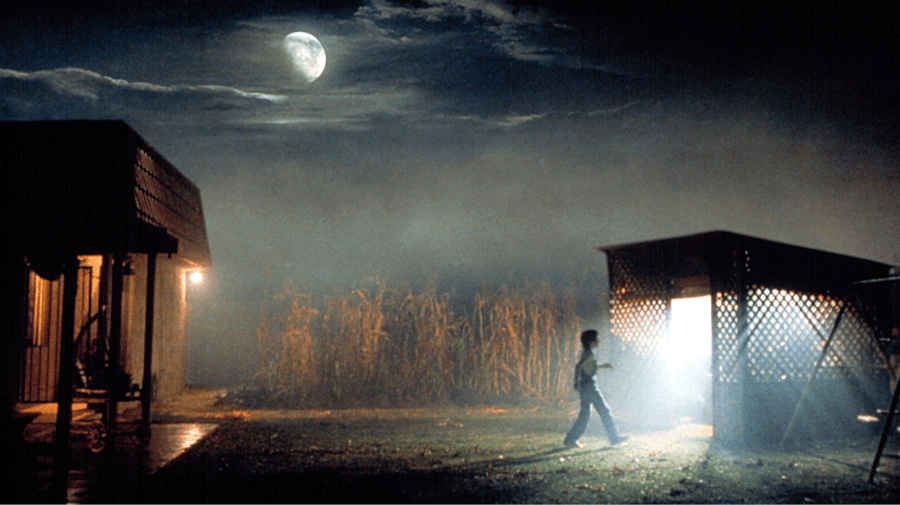
It’s not just the images that are special in E.T. though — the movie would not work without its masterful score by John Williams, either. By 1982, Williams was already probably the greatest film composer of all-time, having worked with some of the greatest directors ever like William Wyler, Alfred Hitchcock and Robert Altman in addition to his most famous work with Spielberg and — with George Lucas — on the Star Wars films.
E.T.’s score is emotionally manipulative in that wonderful way that only the best movies pull off. The music primes you for how to feel, and then makes those feelings swell and feel gigantic. Perhaps the best moment in E.T.’s score comes at the very end, when E.T. finally says goodbye. The music rises and suddenly, as E.T.’s ship flies away, a fanfare blares as a rainbow streaks across the sky. Honestly, it’s almost too much, but it’s perfect. No matter how many times I see it, I can’t help but smile (and wipe my eyes).
Kids vs. Adults: Why We Still Love E.T. Now
Somehow, even as I get older, when I watch E.T. I can’t help but identify with the kids. It’s their kindness and innocence, especially set against the fear and confusion of the adults, that takes over my feelings about what’s happening in the movie. Understandably, the adults react to the experience of having a strange extraterrestrial lifeform show up in their lives by trying to figure out what they are and if they’re safe.
It’s a reaction that does make sense. Butone of the sneakily lovely things about E.T. is that it’s a movie that doesn’t really have any bad guys. The adults’ need to understand E.T. ends up being a form of violence anyway, and that’s part of the lesson of the film. Rather, it’s the kids, who react with open-minded and open-hearted curiosity, that have it right when it comes to what might be the best way to respond to mysteries that are hard to explain.
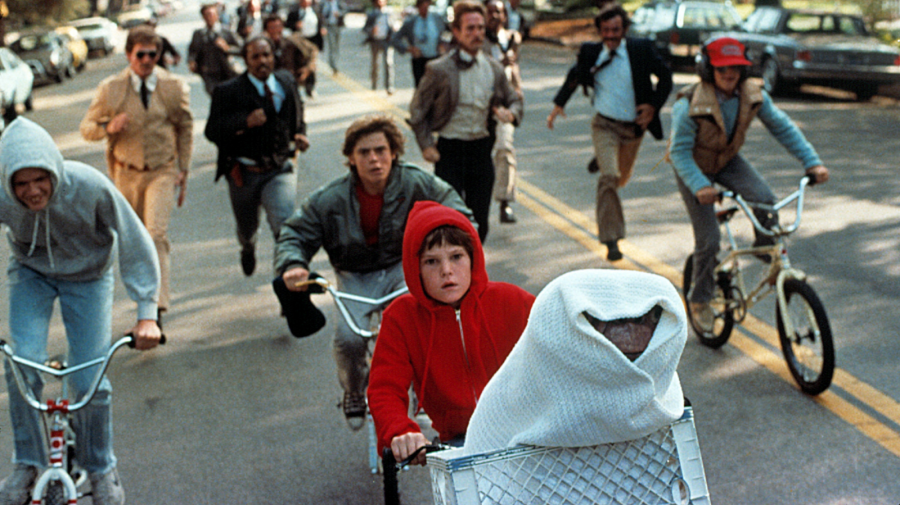
Watching the kids in this movie ride their bicycles all over town without any adult supervision whatsoever feels pretty anachronistic, but it’s hard not to be a little nostalgic for it. Part of the joy of being a kid is the joy of playing around in unsupervised moments. It’s the joy of letting your mind run wild. E.T. ends up being a sort of fantasy of what might happen on any given day. A strange creature might show up; you might make a friend for life. The kids vs. adults dynamic in the movie is a reminder that sometimes you have to let curiosity win.
Ultimately, I think that’s probably why a movie like E.T. that, when it came out, featured no major box office movie stars ended up being the fourth highest grossing film ever (adjusted for inflation). Maybe financial success is a crass way to look at it, but it’s evidence that the movie had an outsized relevance — one that lives on today. It’s a movie about approaching the world with a sense of wonder. I don’t know about you, but I’m always grateful for the reminder of how important that can be.

 Seth Landman
Seth Landman




